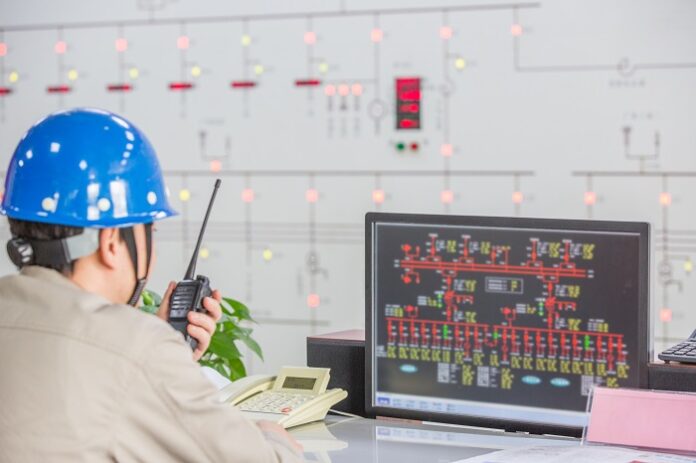Efficiency is key when it comes to managing building operations. One critical aspect of this efficiency is integrating electrical systems to streamline processes and enhance overall performance. By seamlessly connecting various electrical components and systems within a building, facilities managers can achieve greater control, energy savings, and operational effectiveness. We will explore the benefits and importance of integrating electrical systems in building operations and how this approach can revolutionise how we manage and maintain modern structures.
Coordinating Ventilation and Lighting
Coordinating ventilation and lighting through integrated controls is crucial to optimising air quality and building lighting efficiency. By connecting these systems through a centralised building management system, facilities managers can ensure that ventilation and lighting enhance occupant comfort and energy efficiency. For example, when occupancy sensors detect movement in a room, they can adjust the lighting and ventilation systems accordingly, reducing energy consumption while maintaining a comfortable indoor environment.
Integrated controls help improve air quality and lighting efficiency and facilitate better overall building management. By centralising control of ventilation and lighting systems within building management systems, facilities managers can monitor and adjust settings remotely, allowing quick responses to changing conditions and potential energy savings. Integrating ventilation and lighting controls can also improve occupant productivity and satisfaction, as a well-controlled indoor environment can positively impact comfort levels and overall well-being.
Efficiently managing a building’s ventilation and lighting systems through centralised building management systems isn’t just about saving energy—it directly impacts the well-being and productivity of everyone inside. By syncing lighting and air systems, facilities managers can automatically adjust the environment based on room occupancy and use. This smart coordination means that lights dim and air flows adjust without manual intervention, keeping rooms comfortable while cutting down on unnecessary power use. The ability to fine-tune these settings from a remote location further simplifies building management. It ensures that any adjustments needed for sudden changes in weather or room use can be made swiftly, without disruption.
Energy Management Strategies
Energy management strategies are essential, as reducing energy consumption and costs is a top priority for businesses and organisations. One effective technique for achieving this is integrating electrical systems into building operations. By connecting various components and systems, facilities managers can optimise energy usage, identify areas of inefficiency, and implement solutions to reduce energy waste. This can lead to significant cost savings and a more sustainable approach to building management.
Implementing integrated electrical systems not only helps reduce energy consumption and costs but also enhances the overall performance of a building. By streamlining processes and improving control over electrical systems, facilities managers can ensure that operations run smoothly and efficiently. This approach can also improve occupant comfort, safety, and productivity, making it a win-win for building owners and occupants.
Implementing Fire Safety Controls
Ensuring fire safety in buildings is paramount, and automated systems play a critical role. By integrating fire safety controls with electrical systems, facilities managers can enhance the overall level of protection and response in the event of a fire. Automated systems can detect fires quicker than manual intervention, leading to faster evacuation times and potentially saving lives. These systems can coordinate with other building systems, such as HVAC and security, to ensure a comprehensive and efficient response to fire incidents.
Integrated electrical systems streamline building operations and contribute significantly to fire safety measures. By centralising control of various systems through automation, facilities managers can monitor and manage fire safety controls more effectively. This level of integration allows for real-time monitoring, immediate notification of any abnormalities, and quicker response times to potential fire hazards.
Automating fire safety measures transforms how buildings handle emergencies, enhancing safety for everyone inside. With integrated fire safety controls, the system automatically springs into action when a fire is detected, shutting down HVAC systems to prevent smoke spread and unlocking doors to facilitate swift evacuations. This smart coordination between fire alarms and other building systems speeds up response times and helps control the situation until emergency services arrive. The benefits extend beyond immediate reactions; such systems also keep detailed logs of incidents, providing valuable data to prevent future occurrences.
Integrating Security Features
Integrating security features into building operations enhances overall safety and protection. Modern systems can streamline security processes through technological integration, making it easier for facility managers to monitor and control access points, surveillance cameras, and alarm systems. By linking these security components, buildings can achieve higher security and responsiveness to potential threats.
One of the key benefits of integrating security features is the improved efficiency in managing building operations. With a centralised system that connects all security elements, facility managers can quickly identify and respond to security breaches or issues in real time. This level of control not only enhances overall security but also helps to reduce downtime and costly disruptions to building operations. Modern systems often include advanced AI and analytics capabilities, allowing for predictive maintenance and proactive security measures to be implemented, further enhancing the overall safety and security of the building.
Seamlessly integrated security features are a game-changer for ensuring robust building safety. Facility managers can effortlessly oversee and adjust security measures in real-time with everything from door locks to surveillance cameras connected through a single system. This unified approach tightens security and simplifies building operations management, allowing quick reactions to unusual activities or unauthorised access. Enhanced with AI and analytics, these systems not only react to threats but can predict and prevent them, providing a smarter, more proactive security posture.





